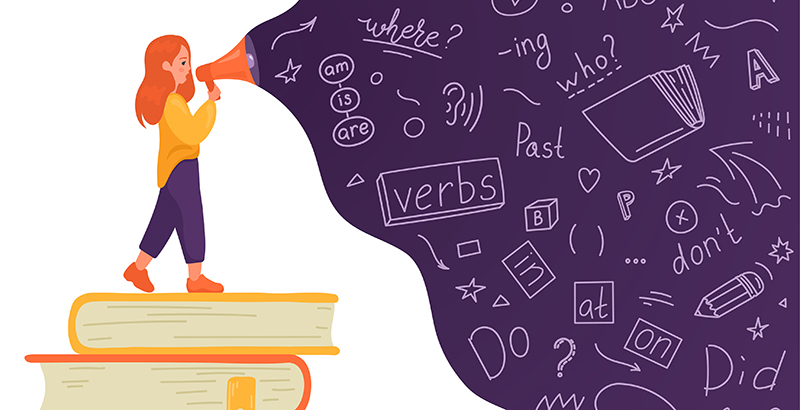Steiner & Wilson: Case Study — Some Tough Questions, and Some Answers, About Fighting COVID Slide While Accelerating Student Learning

Get essential education news and commentary delivered straight to your inbox. Sign up here for The 74’s daily newsletter.
America’s longstanding achievement gaps have been made more acute by the learning losses of the COVID-19 crisis. As a response, we have seen an increasingly strong admonition that states and districts adopt an acceleration strategy. Instead of the almost universally used strategy of remediation, in which schools try to teach students what they missed a year or more ago, acceleration looks forward: acceleration readies students for upcoming grade-level lessons.
Acceleration is easy to write about and extremely challenging to accomplish. It starts with establishing what students absolutely need to know, which requires accurate diagnostics geared to immediate learning targets. It also requires close linkages between the diagnostics and the curricular material that the teachers will use. Painfully but necessarily, it also means restricting the number of learning goals for the academic year: One cannot accelerate students who are seriously behind to the point at which every grade-level skill becomes accessible. A smaller number of key goals is crucial to success. Finally, additional professional support for school personnel is likely to be needed, while more typical supports such as tutoring, in-class differentiated instruction and Response to Intervention strategies may need restructuring.
To meet the challenges of accelerated learning, organizations such as TNTP and the Thomas B. Fordham Institute have compiled extensive guidance for school districts. But the devil is very much in the details: How, exactly, is a district to approach the nuts and bolts of addressing a very specific set of learning challenges? In an earlier co-authored piece, a school principal who had long used acceleration described her strategy around mathematics. It is compelling. But that was a story from a single school. The field needs broader but nevertheless concrete advice.
Districts (and states) that have large contracts with providers of instructional materials should expect publishers to be ready and able to partner with them to transition to acceleration in ways that meet the needs of district leaders, principals and teachers as they work to increase learning readiness for on-grade work this fall. Education leaders should also be asking themselves tough questions about elements of their own readiness:
- Are they using high-quality instructional materials that include diagnostic assessments, which will alert teachers as to which skills must be taught to which students, so all students in that grade are ready for grade-level work?
- If such materials have not yet been adapted, is the district working to ensure that teachers have the data to identify what extra instruction their students may need to be prepared for upcoming grade-level work? That work may include providing new diagnostic tools and/or new professional support for teachers.
- Has the district worked with teachers to identify a modified (reduced) number of grade-level learning goals in English Language Arts and math for students who are behind and getting acceleration support?
The key challenge here is fragmentation. Assessment results can come from multiple sources — in-class quizzes, curriculum-embedded diagnostics, nationally normed assessments and (until last year) state tests, among others. Trying to use multiple testing data from different sources to identify what to teach small groups of students then becomes a major headache, especially since some stand-alone tests (such as i-Ready) offer specific links to curriculum material that may or may not integrate seamlessly with the district curriculum teachers are supposed to use.
Now, consider how a large urban district, District A, sought to adapt materials it was already using to implement an acceleration strategy for early elementary foundational skills.
In early spring 2021, as many districts were raising concerns about immediate challenges, such as getting students back into schools, District A convened a task force to consider summer 2021 instruction. Its charge was to research and determine how to use that time to provide equitable access to instruction that would address learning loss among early elementary students. District A began examining options that could be delivered over four weeks. It consulted Wilson Language Training because it was already using the company’s Fundations learning-to-read program throughout the district.
Wilson Fundations is a structured literacy program that provides a pathway to develop students’ phonemic awareness, decoding and automatic word recognition, handwriting and spelling. It is a supplemental program that sequentially and cumulatively establishes foundational skills critical for reading and writing success — supporting the ELA program in place — based on evidence from the accumulation of research on reading and writing acquisition and instruction — the science of reading.
Although in years past Fundations had been used in various settings for summer programs, it had not been formalized into a set program for this purpose. Due to the urgent need and short timeline, WLT also put together a task force to determine key considerations for a 20-day, Fundations-based program that included teachers and school administrators who had experience using Fundations, and Wilson literacy specialists and advisers.
It quickly became evident that the teachers would need both professional learning and clearly specified lesson guidelines to be set out in a manual, so instruction would be efficient and highly focused. A key question was how to determine which foundational skills students had missed during this COVID-challenged school year so teachers might tailor individualized instruction accordingly.
Because Fundations is cumulative, building upon previously mastered skills and including both spiraling back for review and layering as new skills are introduced, the conversation led to a rethinking of the idea of “filling in” missed skills. Rather than evaluating all that had been taught during the previous year and seeking to address many of those skills during the summer, the task force focused on what rising first- and second-graders would encounter at the beginning of the 2021-22 school year. Its members came to the realization that:
- It is impossible to teach all things from a one-year curriculum in 20 days.
- If assessments determined skill gaps, teachers would need to expertly group kids and efficiently teach a variety of skills in a short amount of time.
- Professional development would be difficult, as teachers new to Fundations would need to learn how to teach a full-year curriculum.
- With a laser focus on the identification of and guidance on teaching a manageable number of key skills, teachers could be prepared for instruction and students could master them in the given amount of time.
- Instruction that targeted key skills would best prepare students for a successful start to the school year.
The next step was to map out the program. Since many schools and districts that used Fundations during the regular academic year did not intend to offer summer learning opportunities but still needed to help students begin the year with success, the task force created something that could be used either in the summer or at the beginning of the school year. The team also determined that it made most sense to examine the initial Fundations Units (essentially, the first month of the upcoming school year) to identify the most critical skills that would prepare students for success at the start. The district wished to provide a pre- and post- curriculum-based assessment, so this was developed with an eye toward the key skills directly related to the summer program rather than all the previous year’s foundational skills.
WLT planned intensive instruction in three half-hour components for each daily lesson with a focus on: 1) phonemic awareness, the alphabetic principle and phonics; 2) transcription skills: handwriting fluency and spelling; and 3) automatic recognition of words and reading practice with text that contains taught word patterns and attention to meaning and an organized, paraphrased retell. Finally, the task force put an appropriate name to the effort — Ready to Rise.
Although District A initially proposed allocating 30 minutes per day to the Fundations Ready to Rise program, WLT recommended 60- or, still better, 90-minute sessions to ensure real mastery. Although the daily summer sessions would be longer, the district also planned to provide math instruction and was considering using another independent online assessment of reading skills with corresponding lessons. WLT responded that it was not possible to achieve mastery of the key identified skills in a 20-day span with only 30 minutes a day, and though the lessons might be alternated within a 60-minute time frame, the 90-minute sessions were highly recommended. The program’s three components could also be done with three teachers working with small groups at different times throughout the day, and so did not necessarily require 90 consecutive minutes. WLT made the case that the spelling component of the lesson reinforces decoding, the storage of words in long-term memory, and reading fluency. The team also emphasized the importance of reading practice, as reading with fluency and understanding is the ultimate goal.
District A decided to follow the recommendation to do all three components of Ready to Rise. Several other schools and districts also decided to implement the program during the upcoming summer.
What larger insights can be drawn, once one is determined to focus on future rather than past learning goals? First, granular planning is critical: Leaders need to set out precisely how many minutes of instruction will be provided, the exact learning goals and the specific materials, identify all those involved (tutors, specialists, and teachers) and give them access to the shared professional development on the chosen acceleration strategies. Second, this requires a sea change from business as usual, where teachers attempt to impart skill-based standards using an eclectic rather than a coherent curriculum. It is not possible to accelerate children with fragmented content. Summer programs, tutoring, Response to Intervention, professional development — indeed, all efforts to prepare students for grade-level instruction — must rest on fierce agreement about the shared curriculum to be taught in classrooms. What we teach is the anchor that holds everything else in place.
David Steiner is executive director of the Johns Hopkins Institute for Education Policy.
Barbara Wilson is an author and co-founder of Wilson Language Training.
Get stories like these delivered straight to your inbox. Sign up for The 74 Newsletter

;)
